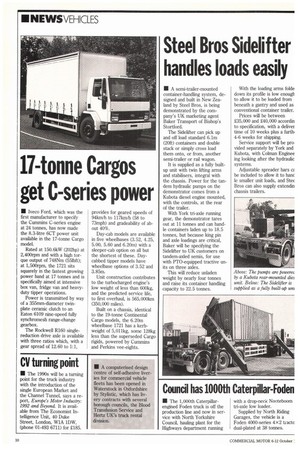11-tonne Cargos get C-series power
Page 8

If you've noticed an error in this article please click here to report it so we can fix it.
• Iveco Ford, which was the first manufacturer to specify the Cummins C-series engine at 24 tonnes, has now made the 8.3-litre 6CT power unit available in the 17-tonne Cargo model.
Rated at 150.6kW (202hp) at 2,400rpm and with a high torque output of 748Nm (551bft); at 1,500rpm, the 1721 sits squarely in the fastest growing power band at 17 tonnes and is specifically aimed at intensive box van, fridge van and heavyduty tipper operations.
Power is transmitted by way of a 355min-diameter twinplate ceramic clutch to an Eaton 6109 nine-speed fully synchromesh range-change gearbox.
The Rockwell R160 singlereduction drive axle is available with three ratios which, with a gear spread of 12.60 to 1:1, provides for geared speeds of 94Icrn/h to 1171cm/h (58 to 73mph) and gradeability of about 40%.
Day-cab models are available in five wheelbases (3.52, 4.25, 5.00, 5.60 and 6.20m) with a sleeper-cab option on all but the shortest of these. Daycabbed tipper models have wheelbase options of 3.52 and 3.85m.
Unit construction contributes to the turbocharged engine's low weight of less than 600kg, and the predicted service life, to first overhaul, is 565,000km (350,000 miles).
Built on a chassis, identical to the 19-tonne Continental Cargo models, the 6.20m wheelbase 1721 has a kerbweight of 5,011kg, some 128kg less than the superseded Cargo rigids, powered by Cummins and Perkins vee-eights.






















































